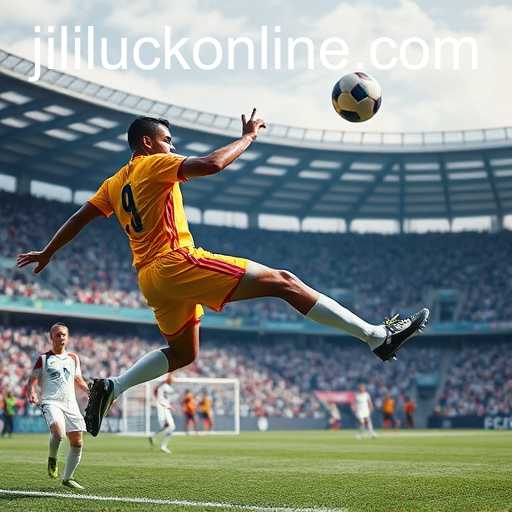Discover the impact of Jililuck, a blend of skill, agility, and luck, in sports. Learn how this concept is changing athlete performance and fan experiences.
Exploring the Rising Influence of Jililuck in Sports
In the ever-changing landscape of sports, new trends and terms constantly emerge. One intriguing keyword making waves is Jililuck. You may not find it in conventional sports dictionaries or even in the glossary of popular sports. Yet, its impact is undeniable. What does Jililuck entail, and how is it shaping the sports industry?
Understanding Jililuck
At its core, Jililuck represents a blend of agility, luck, and a unique skill set that sets athletes apart from the rest. The term has gained traction among sports enthusiasts who use it to describe athletes whose performance transcends ordinary expectations. These performances are often characterized by split-second decisions, incredible reflexes, and moments where fortune seems to favor them.
The term is believed to have originated from a fusion of words that encapsulate both natural talent and the unpredictable nature of sports. The rise of social media has allowed this modern sports lingo to spread rapidly, becoming a part of conversations among fans and analysts alike.
Jililuck in Action
Jililuck is most commonly witnessed in sports that demand quick thinking and explosive action. Fans of basketball may witness Jililuck when a player makes a seemingly impossible play under intense pressure. Meanwhile, in soccer, a last-minute goal that appears almost magical might be attributed to Jililuck by passionate supporters.
It is not just about luck or chance; Jililuck often indicates an athlete who trains rigorously to maintain peak physical condition. Their preparation allows them to seize unforeseen opportunities that others might miss. The intersection of skill and serendipity is where Jililuck truly shines.
Notable Instances
Several memorable events exemplify the concept of Jililuck. Many fans recall the infamous "hand of God" goal by Diego Maradona in the 1986 World Cup as an instance where Jililuck played a part. Although controversial, Maradona's quick thinking and decisive action created an iconic sports moment that stands as a testament to this concept.
In tennis, Jililuck may be present when a player down on match points turns the game around with incredible rallying and precision hits. Such performances are not only thrilling but also leave audiences and commentators in awe, proving that Jililuck cannot be easily explained purely by statistics or strategies.
The Role of Jililuck in Athlete Development
For aspiring athletes, incorporating the essence of Jililuck into their regimen can be transformative. Coaches and trainers emphasize the importance of being prepared for unpredictable scenarios without relying solely on skill sets. Developing anticipation skills and practicing mindfulness can help athletes harness their internal Jililuck potential.
Sports psychology now views Jililuck as a mental state, encouraging athletes to embrace uncertainty and use it to their advantage. Mental resilience plays a vital role, forging athletes who excel under pressure and take full advantage of the random elements that are inherent to competitive sports.
Jililuck Beyond Professional Sports
While professional athletes often dominate discussions of Jililuck, everyday sports enthusiasts can also experience it. Whether in a local weekend game or a casual match among friends, moments of seemingly impossible feats can be attributed to Jililuck. These moments remind us that the joy of sports extends beyond competition; it is about experiencing the unusual and unexpected with skill and a touch of luck.
For amateur athletes, recognizing Jililuck moments can enhance their appreciation of the sport. It encourages them to keep pushing their limits and find joy in each play, regardless of outcome.
Cultural Impact
The spread of Jililuck as a concept reflects broader cultural shifts in how we view sports. It challenges the deterministic view of athletic events, bringing surprise and unpredictability to the forefront. As the digital age continues to accelerate the pace at which new ideas spread, Jililuck may further influence how we watch, play, and discuss sports.
This cultural impact extends beyond media coverage, spilling into everyday conversations about sports. Enthusiasts now have new language to describe plays and performances, both complementary and critical in equal measure.
Conclusion
As we reflect on the concept of Jililuck, its power lies in its ability to encompass elements of the unexpected that make sports both challenging and thrilling. It reveals the depth of human capability, where preparation meets opportunity, creating moments that remain etched in our memory. The resonance of this term in modern sports vernacular showcases its rightful place in the narratives of athletic triumphs. Embrace Jililuck, the bridge between fortuity and athletic distinction it presents—because sometimes, the biggest victory lies in the fusion of effort and the unseen "X" factors.




